Related Research Articles

Kensington is an affluent district in the Royal Borough of Kensington and Chelsea in the West of Central London.

Knightsbridge is a residential and retail district in central London, south of Hyde Park. It is identified in the London Plan as one of two international retail centres in London, alongside the West End.

Notting Hill is a district of West London, England, in the Royal Borough of Kensington and Chelsea. Notting Hill is known for being a cosmopolitan and multicultural neighbourhood, hosting the annual Notting Hill Carnival and Portobello Road Market. From around 1870, Notting Hill had an association with artists.
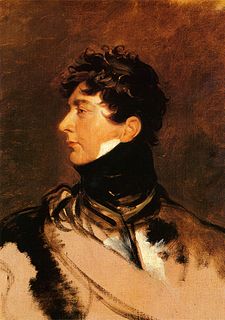
The Regency era in the United Kingdom of Great Britain and Ireland was a period towards the end of the Georgian era, when King George III was deemed unfit to rule due to his illness and his son ruled as his proxy, as prince regent. Upon George III's death in 1820, the prince regent became King George IV. The terms Regency or Regency era can refer to various periods of time; some are longer than the formal Regency from 1811 to 1820. The period from 1795 to 1837, which includes the latter part of George III's reign and the reigns of his sons George IV and William IV, is sometimes regarded as the Regency era, characterised by distinctive trends in British architecture, literature, fashions, politics, and culture.
Earl's Court is a district of Kensington in the Royal Borough of Kensington and Chelsea in West London, bordering the rail tracks of the West London line and District line that separate it from the ancient borough of Fulham to the west, the sub-districts of South Kensington to the east, Chelsea to the south and Kensington to the northeast. It lent its name to the now defunct eponymous pleasure grounds opened in 1887 followed by the pre–World War II Earls Court Exhibition Centre, as one of the country's largest indoor arenas and a popular concert venue, until its closure in 2014. The area has long been known as "Bedsitter Land" with many of its stuccoed terraces converted into studio flats, hotels and hostels.

Kensington High Street is the main shopping street in Kensington, London. The area is identified in the London Plan as one of 35 major centres in Greater London.

South Kensington is a district just west of Central London in the Royal Borough of Kensington and Chelsea. Historically it settled on part of the scattered Middlesex village of Brompton. Its name was supplanted with the advent of the railways in the late 19th century and the opening and naming of local tube stations. The area is known as a popular tourist destination owing ], have been considered as some of the most exclusive real estate in the world. Since the First World War it has become a cosmopolitan area attracting Belgian and French refugees, but also Poles during the Second World War and after, and latterly Spanish, Italian, American, and Middle-Eastern expatriates. The French presence is emphasised by the Lycée Français Charles de Gaulle, the French Institute, hosting the Ciné Lumière a window on French cinema and the Alliance française and the French consulate, among other diplomatic residences. With a French bookshop and many international cafés in the area, it has been called Paris’s 21st arrondissement.
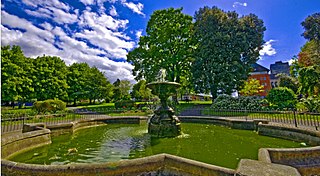
Sutton is the principal town in the London Borough of Sutton in South London, England. It lies on the lower slopes of the North Downs, and is the administrative headquarters of the Outer London borough. It is 10 miles (16 km) south-south west of Charing Cross, and is one of the thirteen metropolitan centres in the London Plan. The population of the town was counted as 41,483 in the 2011 census, while the borough overall counted 204,525.
West Kensington, formerly North End, is an area in the ancient parish of Fulham, in the London Borough of Hammersmith and Fulham, England, 3.4 miles (5.5 km) west of Charing Cross. It covers most of the London postal area of W14, including the area around Barons Court tube station, and is defined as the area between Lillie Road and Hammersmith Road to the west, Fulham Palace Road to the south, Hammersmith to the north and West Brompton and Earl's Court to the east. The area is bisected by the major London artery the A4, locally known as the Talgarth Road. Its main local thoroughfare is the North End Road.
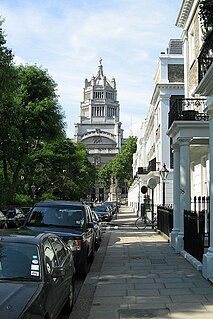
Thurloe Square is a traditional garden square in South Kensington, London, England.

The Ladbroke Estate was a substantial estate of land owned by the Ladbroke family in Notting Hill, London, England, in the early 19th century that was gradually developed and turned into housing during the middle years of the century, as London expanded. Characterized by terraces of stuccoed brick houses backing onto large private garden squares, much of the original building remains intact today, and now forms the heart of one of London's most expensive and fashionable neighbourhoods.

Thomas Allason (1790–1852) was an English architect, surveyor and landscaper, noted in particular for his work at Connaught Square and the Ladbroke Estate in Kensington.
James Weller Ladbroke was a nineteenth-century landowner and the principal developer of the Ladbroke Estate, a substantial parcel of land in Notting Hill, London, England. Many streets in Notting Hill still bear the Ladbroke name today, including Ladbroke Grove and Ladbroke Square, and the former Ladbroke Estate is now a conservation area.
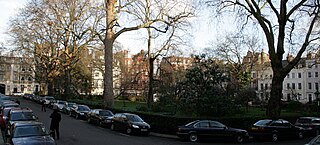
Kensington Square is a garden square in Kensington, London, W8. It was built from 1692 on land acquired for the purpose in 1685 and is the oldest such square in Kensington. The houses facing, Nos. 1–45, are listed Grade II for their architectural/historic merit.
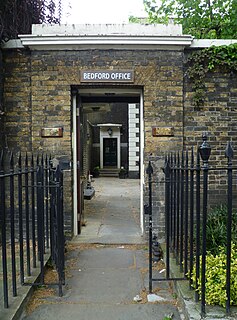
The Bedford Estate is an estate in central London owned by the Russell family, which holds the peerage title of Duke of Bedford. The estate was originally based in Covent Garden, then stretched to include Bloomsbury in 1669. The Covent Garden property was sold for £2 million in 1913 by Herbrand Russell, 11th Duke of Bedford, to the MP and land speculator Harry Mallaby-Deeley, who sold his option to the Beecham family for £250,000; the sale was finalised in 1918.
James Gunter was an English confectioner, market gardener and property developer who laid the foundations for what became one of the great residential estates in West London, developed by his descendants, the "Redcliffe Estate" and The Boltons in Little Chelsea and West Brompton.
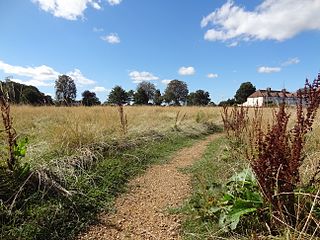
Sutton Common is the name of former common land and a district and neighbourhood located in Sutton, London. The area is mostly located within the London Borough of Sutton, with some of the streets to the north and west of Sutton Common Park adjoining Lower Morden and Morden within the London Borough of Merton. Much of the area is taken up by the large Kimpton Park commercial and industrial estate, adjoining the A217. It is served by Sutton Common railway station. The area to the south and east of Oldfields Road uses an SM1 postcode and the area to the north and west uses SM3.

Holland House, originally known as Cope Castle, was an early Jacobean country house in Kensington, London, situated in a country estate that is now Holland Park. It was built in 1605 by the diplomat Sir Walter Cope. The building later passed by marriage to Henry Rich, 1st Baron Kensington, 1st Earl of Holland, and by descent through the Rich family, then became the property of the Fox family, during which time it became a noted gathering-place for Whigs in the 19th century. The house was largely destroyed by German firebombing during the Blitz in 1940 and today only the east wing and some ruins of the ground floor and south facade remain, along with various outbuildings and formal gardens. In 1949 the ruin was designated a grade I listed building and it is now owned by the Royal Borough of Kensington and Chelsea.

There are four conservation areas within the town of Sutton. One of these is in Sutton town centre - the Sutton Town Centre High Street Crossroads Conservation Area - while the other three are residential: Grove Avenue, Landseer Road and the Sutton Garden Suburb.

Leicester House was a large aristocratic townhouse in Westminster, London, to the north of where Leicester Square now is. Built by the Earl of Leicester and completed in 1635, it was later occupied by Elizabeth Stuart, a former Queen of Bohemia, and by the Hanoverian Princess of Wales.
References
- 1 2 Starren, Carolyn (2006). The Kensington book. London: Historical Publications. p. 123. ISBN 9781905286164.
- 1 2 "Kensington Square and environs: Introduction". British History Online (BHO). Retrieved 18 February 2016.
- ↑ "News". Gallery 19. 1 September 2011. Retrieved 18 February 2016.
- ↑ "London Gardens Online". London Gardens Online. Retrieved 18 February 2016.